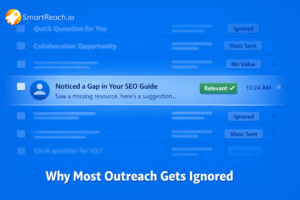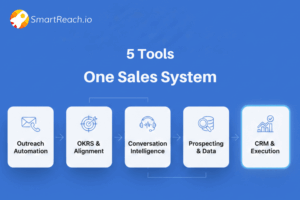Why Low Email Open Rates Lead to Spam Folder Issues?
Open rates tell you how many people actually opened your email. It’s one of the most basic (and important) email metrics.
A low open rate isn’t just about fewer people seeing your message.
It’s actually a warning sign to both you and the email service providers.
When your emails aren’t getting opened, it sends a signal that your content might be irrelevant, unwanted, or even spammy. And that’s when trouble starts.
Mailbox providers take that low open rate as a red flag.
They start to question your credibility. And if it continues, your future emails could get filtered straight into the spam folder even if your content is clean.
In this blog, we’ll break down how low open rates directly impact deliverability and why they play such a big role in spam filtering.
Let’s get into it.
Why do low open rates cause my emails to end up in spam?
You might think low open rates just mean your subject line didn’t hit the mark.
But there’s more to it.
When people consistently ignore your emails, mailbox providers take it as a red flag.
Let’s break down how this works:
#1 Mailbox providers track patterns, not just content
Email service providers (like Gmail, Outlook, Yahoo) track how recipients interact with your emails. This includes:
- Email Opens
- Clicks on the email links
- Email Replies
- Deletions of emails
- Manual Spam flags by the recipients
Email spam filters use these behavior-based signals to determine whether your emails are wanted or unwanted.
If your emails are consistently ignored, that forms a pattern. And yes, that pattern is way more powerful than any “spammy” word in your subject line.
#2 Low open rates signal a lack of interest
When people stop opening your emails, mailbox algorithms assume they’re not worth delivering anymore.
They treat ignored emails the same way they treat bad ones, as irrelevant. Over time, this leads to your emails being deprioritized or filtered out of the inbox completely.
#3 Poor engagement hurts the sender’s reputation
Your sender reputation is like your digital credibility score. It’s built over time and affected by how recipients engage with your emails.
If people are ignoring your emails, it lowers your sender score. And a low sender score means ESPs start seeing you as a potential spammer, even if you’re not doing anything wrong.
Recommended Read: How to Improve Your Sender Reputation for Better Cold Email Deliverability?
#4 Bad targeting leads to low open rates
Even if your email copy is amazing, it won’t help if you’re sending it to the wrong people.
When your emails land in inboxes that don’t care about your content, your open rates naturally drop.
That leads to more unsubscribes, less engagement, and sometimes even spam complaints, all of which damage your reputation.
Better targeting = better open rates = better inbox placement.
Recommended read: Why Email Targeting Mistakes Hurts Your Outreach Campaigns
#5 ESPs compare your performance to other senders
Your email performance doesn’t exist in a vacuum. Email service providers, compare your sender metrics with other senders reaching the same recipients.
So if your open rate is consistently lower than the average across similar types of emails or domains, ESPs see that as a red flag.
They start deprioritizing your emails compared to others, even if your content is perfectly legit.
#6 Repeated low opens can trigger automated filters
Spam filtering is automated.
If an ESP notices that people are regularly ignoring your emails across multiple sends, it doesn’t wait for spam complaints.
Instead, filters start kicking in by default.
Your emails could land in the spam folder before anyone even sees them, simply because history suggests they’ll be ignored.
That’s why fixing open rates isn’t just about better subject lines.
It’s about improving your email list quality, sending frequency, relevance, and timing, so that you’re always sending to people who actually want to hear from you.
How can I boost my email open rates to improve deliverability?
Improving deliverability starts with improving engagement. The higher your open rates, the stronger your sender reputation becomes, and the more likely your emails are to land in the inbox instead of spam.
This isn’t just about writing catchy subject lines; it’s about understanding how mailbox providers judge sender quality, cleaning your list regularly, personalizing sends based on behavior, and testing where your emails actually land.
We’ve broken down these strategies in detail in our blog on “How to boost email open rates to improve deliverability”. Give it a read to learn the exact steps that can make your emails both more visible and more effective.
Takeaway on low open rate
Low open rates aren’t just about fewer eyeballs on your emails; they tell inbox providers your messages might not be worth delivering.
And once that pattern sets in, getting back into the inbox gets a whole lot harder. So if you’re serious about better deliverability, don’t just tweak your subject lines.
Focus on relevance, clean targeting, and consistent engagement. That’s what keeps your emails seen, opened, and out of spam.
Cold email software like SmartReach.io can help you do exactly that, with automation, targeting, and deliverability features designed to get your cold outreach noticed. It’s built to keep your emails landing where they should in the inbox, not the spam folder.
Try SmartReach.io free for 14 days
FAQ on low open rate causing emails to land in spam folder
Q1. Why do my emails keep ending up in spam?
There are a few common culprits: poor sender reputation, bad targeting, spammy subject lines, low engagement, or technical issues like missing authentication (SPF, DKIM, DMARC). Over time, ESPs learn from recipient behavior and if your emails are often ignored or deleted, they’re more likely to be flagged as spam.
Q2. Why do regular emails suddenly go to spam?
Even if you’ve been landing in inboxes before, a dip in engagement or a few spam complaints can shift things quickly. Email providers constantly update their filters. If your open rates drop or your audience stops interacting, your “regular” emails can get deprioritized fast.
Q3. Is 50% a good open rate?
Yes, 50% is an excellent open rate for most email campaigns. The average open rate across industries typically ranges between 20% to 30%. So if you’re hitting 50%, it means your subject lines, targeting, and sender reputation are all working well.
Q4. Why are my email open rates so low?
Low open rates usually come down to one (or more) of these: irrelevant audience, weak subject lines, poor timing, or sender reputation issues. If your emails aren’t landing in the primary inbox or your leads aren’t interested, opens will naturally dip.
Q5. How do I get emails to stop going to spam?
Start by improving engagement: send relevant content to the right audience. Clean your list regularly, avoid spam-trigger words, and make sure your domain is authenticated with SPF, DKIM, and DMARC. Also, don’t blast cold emails without warming up your inbox first.
Q6. How do I stop my emails from being marked as spam on Gmail?
Gmail’s filters are behavior-driven. If people delete or ignore your emails, future ones might hit spam. To avoid this, focus on sending high-quality, relevant emails. Personalize your content, avoid misleading subject lines, and make sure your emails are technically sound (proper authentication, no broken links, etc.).




